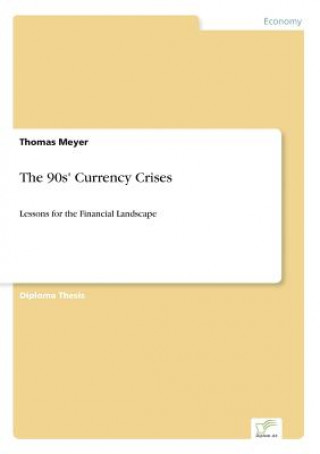
Kód: 05297998
90s' Currency Crises
Autor Thomas Meyer
Inhaltsangabe:Abstract: When on June 2nd 1997 Thailand devalued its currency, the stage was set was the most severe and virulent currency crisis of that decade. The sudden reversal of capital flows depleted economic wealth and so ... celý popis
- Jazyk:
 Angličtina
Angličtina - Väzba: Brožovaná
- Počet strán: 92
Nakladateľ: Diplom.de, 2000
- Viac informácií o knihe

83.48 €
Bežne: 85.15 €
Ušetríte 1.68 €

Skladom u dodávateľa
Odosielame za 15 - 20 dní
Mohlo by sa vám tiež páčiť
-

Selected Topics In Structronics & Mechatronic Systems
215.87 € -

Richard Mosse
94.25 € -

Why Is Sex Fun?
10.36 € -28 % -

Pupil Friendly IEPs and Target Sheets
163.91 € -10 %
Darujte túto knihu ešte dnes
- Objednajte knihu a vyberte Zaslať ako darček.
- Obratom obdržíte darovací poukaz na knihu, ktorý môžete ihneď odovzdať obdarovanému.
- Knihu zašleme na adresu obdarovaného, o nič sa nestaráte.
Viac informácií o knihe 90s' Currency Crises
Nákupom získate 208 bodov
 Anotácia knihy
Anotácia knihy
Inhaltsangabe:Abstract: When on June 2nd 1997 Thailand devalued its currency, the stage was set was the most severe and virulent currency crisis of that decade. The sudden reversal of capital flows depleted economic wealth and social cohesion in many East Asian countries, hitherto perveived to belong to the Asian Miracle. Shockwaves of the crisis were felt in most emerging markets, even those outside the region, and reached mature markets when, for instance, the hedge fund Long-Term Capital Management nearly collapsed. In face of these enormous costs, this paper analyses the possibilities and boundaries of attempts to either reduce the likeliness of respective financial shocks or, when unavoidable, lower the costs of managing these crises. On the ground of the state-of-the-art models of currency crises it is examined which domestic or international factors contributed most to the observed outcome. The guiding question is if either moral hazard considerations, in the form of governmental guarantees and alike, or approaches of multiple equilibria are more suited to serve as an explanation. Moreover, this paper illuminates the significance of the original sin hypothesis which states that emerging markets are constrained when trying to borrow abroad in domestic currency or, even when trying at home, to borrow long-term. Although it is acknowledged that all these factors are valid simultaniously, superior importance in the following parts is given on the multiple equilibria approach. The main part of the paper discusses the most influencial reform proposals of academics and institutions such as the IMF or the Group of 22. Approaches for a new financial architecture are divided into issues of the exchange-rate regime, public and private liquidity, and the institutional framework. These recommandations include questions of dollarization; an international lender of last resort; insurance agencies and credit facilities; capital controls; improved regulation and transparency; as well as the addidition of collective action clauses and alike to international bond contracts. They are assessed according to the criteria developed before, especially with regard to the approaches of moral hazard, multiple equilibria, and original sin. Taking into account that any grand scheme is rather unlikely to be realized on short notice, the conclusions concentrate on moderest reform proposals which can be pursued by emerging countries indiviually or with the assistance of international institutions. One of the findings is, that additional liquidity in the event of a crisis, provided by whatever means, is a suitable tool to avoid over-reacting financial markets but must be constrained by conditionality in order to discourage moral-hazard behavior. Moreover, collective action clauses and restrictions on capital inflows can be used as a second line of defense to prevent the buildup of an unsustainable bias towards short-term financing. Further institutional improvements contribute to defuse the original-sin problem but have its benefits developed only over a longer time horizon. Inhaltsverzeichnis:Table of Contents: 1.Introduction1 2.Understanding Currency Crises 2.1The Path from the Canonical Model to Moral Hazard9 2.2Multiple-Equilibria and Financial Panic19 3.At the Core of the Problem: The Exchange-Rate Regime 3.1Currency Pegs versus Floating Exchange Rates23 3.2Dollarization as an Alternative27 4.At the Center of the Problem: Liquidity 4.1The Need for Liquidity or an International Lender of Last Resort34 4.2Insurance and Credit Facilities against Systematic Risk38 4.3Capital Controls 4.3.1Controls on Capital Outflow42 4.3.2Taxes on Capital Inflows45 5.At the Heart of the Problem: The Institutional Framework 5.1International Bankruptcy Standards49 5.2Regulation and Transparency51 5.3Collective-Action Cl...
 Parametre knihy
Parametre knihy
Zaradenie knihy Knihy po anglicky Economics, finance, business & management Economics
83.48 €
- Celý názov: 90s' Currency Crises
- Autor: Thomas Meyer
- Jazyk:
 Angličtina
Angličtina - Väzba: Brožovaná
- Počet strán: 92
- EAN: 9783838624303
- ISBN: 3838624300
- ID: 05297998
- Nakladateľ: Diplom.de
- Hmotnosť: 132 g
- Rozmery: 210 × 148 × 6 mm
- Dátum vydania: 14. June 2000
Obľúbené z iného súdka
-
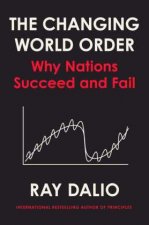
Principles for Dealing with the Changing World Order
24.40 € -4 % -

Business Model Navigator, The
26.73 € -13 % -

Liar's Poker
13.72 € -
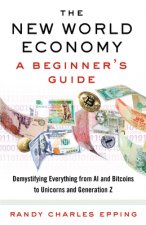
New World Economy: A Beginner's Guide
14.84 € -23 % -

Economics Book
21.24 € -22 % -

Why Nations Fail
11.28 € -13 % -

Team Topologies
23.99 € -11 % -

Freakonomics
8.02 € -20 % -

Misbehaving - The Making of Behavioral Economics
10.67 € -10 % -

Pyramid Principle, The
51.34 € -

Irrational Exuberance
20.43 € -7 % -

Start-Up Nation
9.14 € -29 % -

Think Like a Freak
9.75 € -2 % -

Microeconomics and Behaviour, 3e
95.98 € -
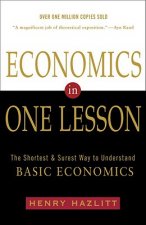
Economics In One Lesson
14.73 € -27 % -

Art of Statistics
10.97 € -23 % -

Rational Optimist
13.72 € -

How I Made One Million Dollars Last Year Trading Commodities
39.24 € -22 % -

Breakthrough Copywriter
17.07 € -

Currency Wars
15.85 € -17 % -

Cult of We
11.38 € -28 % -

History of Economics
15.34 € -28 % -

Fed Up
25.62 € -17 % -

Essential Mathematics for Economic Analysis
73.31 € -

Predictably Irrational
14.94 € -20 % -

A-Level Economics: Year 1 & 2 Complete Revision & Practice (with Online Edition)
26.53 € -15 % -

(Mis)Behaviour of Markets
13.41 € -28 % -

Price of Inequality
9.65 € -19 % -

Economic Facts and Fallacies
16.67 € -21 % -

The Invisible Hand
7.11 € -17 % -

Scrum - A Pocket Guide - 3rd edition
22.87 € -3 % -

Debt, 10th Anniversary Edition
25.82 € -28 % -

Economics 101
13.41 € -28 % -

Leading at a Higher Level
30.90 € -9 % -

Econometric Analysis, Global Edition
86.73 € -

ITIL4 A POCKET GUIDE
23.78 € -

Decision Book
13.62 € -28 % -

Cartoon Introduction to Economics
16.46 € -22 % -
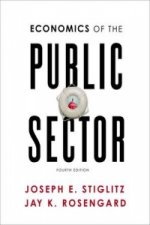
Economics of the Public Sector
78.80 € -

Discovery, Capitalism & Distributive Justice
19.72 € -7 % -

Economics: The User's Guide
12.90 € -23 % -

Freakonomics
5.99 € -30 % -

Human Action
38.12 € -

Phishing for Phools
16.36 € -14 % -
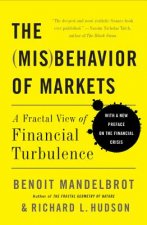
Misbehavior of Markets
22.46 € -

Hypomanic Edge
20.12 € -16 % -

Rise of Carry: The Dangerous Consequences of Volatility Suppression and the New Financial Order of Decaying Growth and Recurring Crisis
24.19 € -27 % -

Myth of Capitalism - Monopolies and the Death of Competition
20.12 € -31 % -

ISE Investments
86.63 €
Osobný odber Bratislava a 2642 dalších
Copyright ©2008-24 najlacnejsie-knihy.sk Všetky práva vyhradenéSúkromieCookies


 21 miliónov titulov
21 miliónov titulov Vrátenie do mesiaca
Vrátenie do mesiaca 02/210 210 99 (8-15.30h)
02/210 210 99 (8-15.30h)